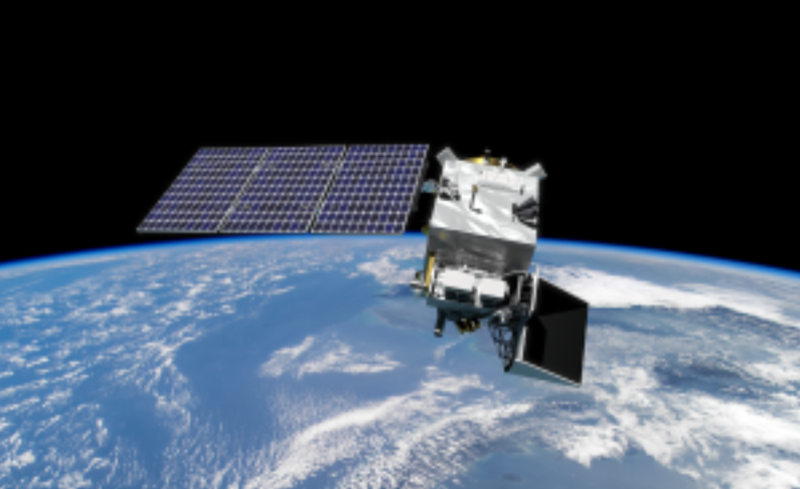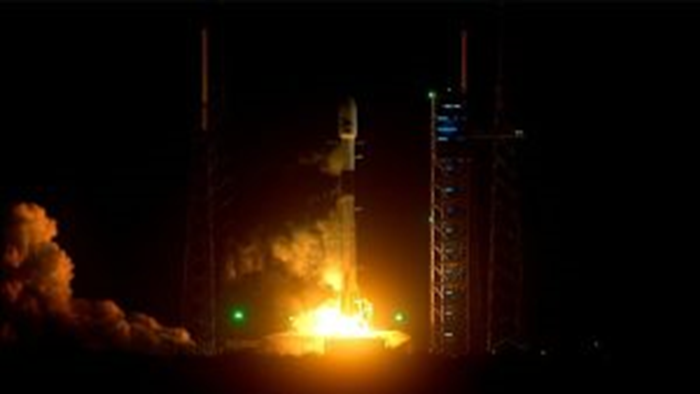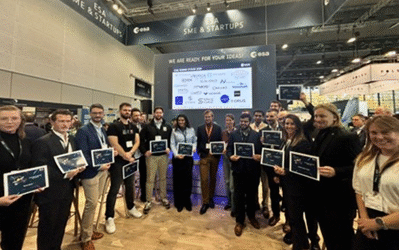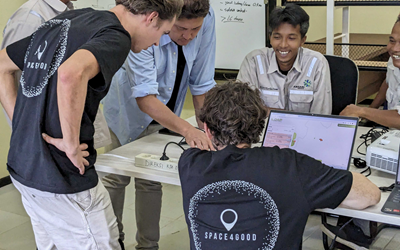On 8 February, NASA launched the climate satellite PACE (Plankton, Aerosol, Cloud, ocean Ecosystem) will shed new light on Earth’s oceans and atmosphere. The Dutch measuring instrument SPEXone is on board, which measure the properties of particulate matter in the atmosphere. That provides crucial for climate models.
View news item on the NSO website

Aerosols and climate models
Particulate matter, or aerosols, are small particles such as soot, ash and desert dust in the atmosphere. They have a major influence on climate change and air pollution, but their precise impact is unclear. Aerosols can both reflect and absorb light and thus have cooling and warming effects on Earth. They also influence the climate through their interaction with clouds.
Otto Hasekamp, scientist at SRON: “Water can condense on aerosol particles, creating cloud droplets. When there are more aerosols, there are also more cloud droplets and this causes clouds to reflect more light. That gives a cooling effect” – but cloud droplets cannot form on every type of aerosol.

Due to these uncertainties, the long-term forecasts for global temperature rise are several degrees apart. SPEXone will determine the properties of aerosols, such as size and composition, while another instrument on the PACE satellite measures the number of cloud droplets. “This reduces the margins in climate models and allows science to make sharper expectations about what will happen given a certain greenhouse gas emission,” Otto Hasekamp explains.
About SPEXone partners: SPEXone is a public–private initiative under scientific lead of SRON, funded by the Netherlands Space Office (NSO), the Netherlands Organisation of Scientific Research (NWO), Netherlands Institute for Space Research (SRON) and Airbus Netherlands. A joint team of Airbus NL and SRON realised SPEXone, with expert support from TNO. The Dutch consortium acknowledges NASA for hosting SPEXone on their PACE observatory as a partnered payload. pace.oceansciences.org/spexone.htm
Consortium
Harm van de Wetering, director of NSO, is proud of this Dutch contribution to the NASA mission: “This is a wonderful and inspiring example of cooperation within the Dutch space sector and between the Netherlands and the United States. NASA is also extremely excited about it. Here, we again contribute an important share to climate research with Dutch technology. I am proud of our top institutions and companies that have made this development possible.”
According to the NSO director, it is therefore not without reason that “space for climate” has been given a prominent place in the long-term space agenda recently presented to Minister Adriaansens. “It is important for the Netherlands that we can continue to play such an important role in the future. The agenda outlines a long-term perspective to ensure that we retain these types of capabilities in the long term and can deploy them for society.”
The consortium that designed, built and tested SPEXone consists of SRON and Airbus NL, supported by experts from TNO. The NSO has financed part of the development of SPEXone, with resources made available by the OCW (Ministry of Education, Culture and Science).
This is an edited version of the news release that appears on the NSO website.
NSO and Airbus Netherlands are technical partners of SBIC:


